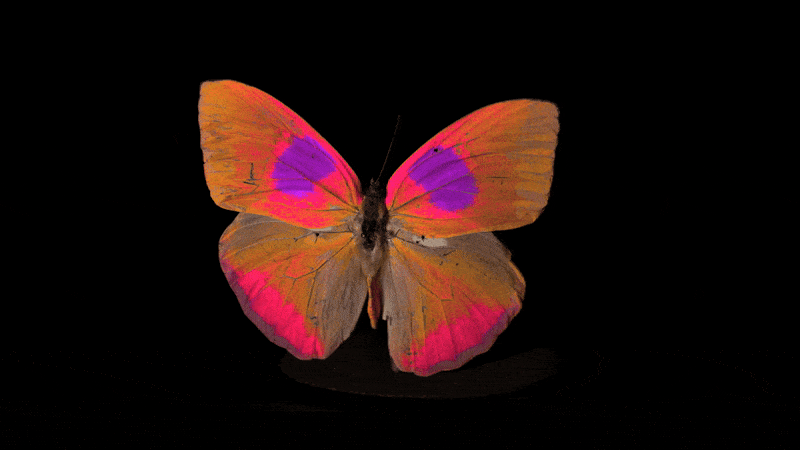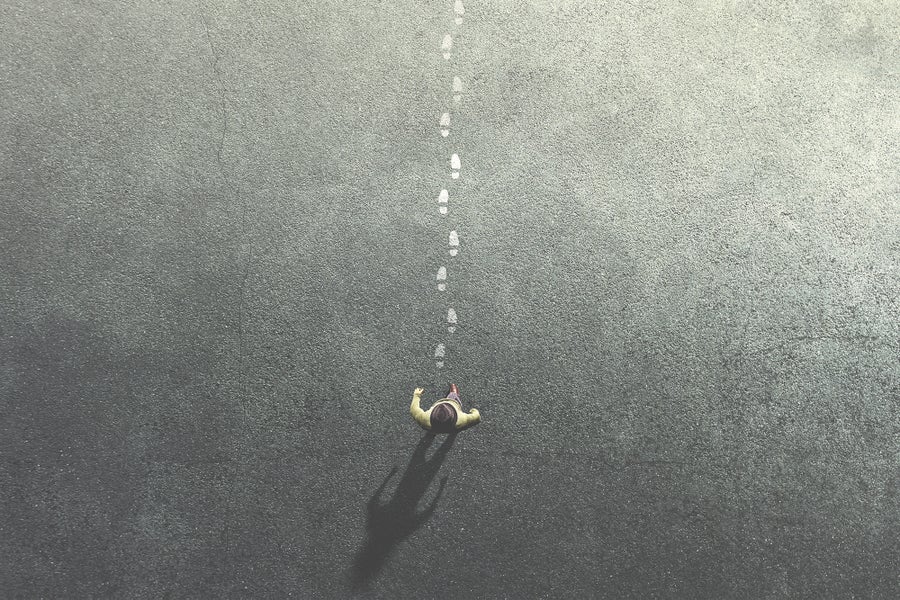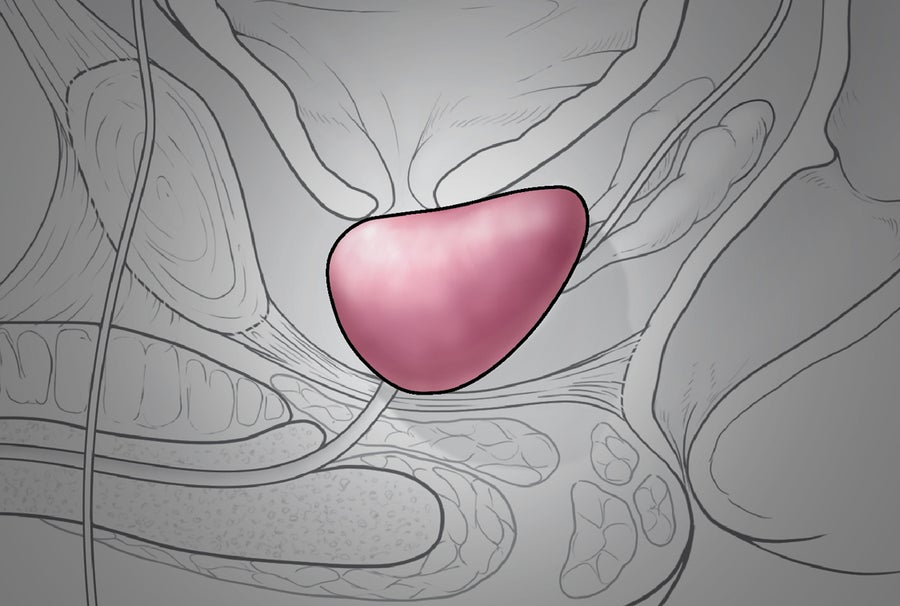For many of us, summer is all about fun in the sun, pool parties and that feeling of endless vacation—unless you keep up with the news. Recently there have been a lot of concerning or even devastating developments, from shocking Supreme Court decisions to brutal record heat waves to dangerous political tensions ahead of the fall’s upcoming U.S. presidential election. All this can make it hard to enjoy the summer fun we’d been looking forward to all winter in the Northern Hemisphere. So here’s a collection of 19 recent science stories you can smile about. They include new animal discoveries, beautiful cosmos you can see from your backyard, facts that sound an awful lot like fiction—and some fresh evidence of ways the world actually is getting a little bit better every day.

A butterfly through the eyes of a bird.
Amazing Abilities in Animals
On supporting science journalism
If you’re enjoying this article, consider supporting our award-winning journalism by subscribing. By purchasing a subscription you are helping to ensure the future of impactful stories about the discoveries and ideas shaping our world today.
Your dogs probably dream about you
Scientific American spoke with Harvard University dream researcher Deirdre Barrett, author of The Committee of Sleep, about what our pets do or don’t dream about. Unlike dolphins, for example—which can sleep with half their brain while the other half remains awake—cats and dogs experience rapid eye movement (REM) sleep. This means it’s likely that these pets have dreams, though not quite like ours. David Peña-Guzmán, a philosopher at San Francisco State University and author of the book When Animals Dream, speculates that cat and dog dreams might involve, for example, what these animals smelled during a daily walk.
Some elephants give each other names
A study in Nature Ecology and Evolution found that African elephants use a type of communication that had never been observed before in nonhuman animals: they give each other names. Dolphins (again!) have been known to signal a peer by mimicking a natural sound that that individual habitually makes. But instead of merely imitating, the elephants make up a unique and dedicated call—often in a low, rumbling register—to get the attention of a specific elephant, and they can do so from up to 1.5 miles away.
We can see how beautiful the world is through a bird’s eyes
A study in PLOS Biology describes a new video recording and analysis technique that allows us to view the world through the eyes of other species. This will allow researchers to better understand animal vision overall—and will help with creating bird-safe windows and understanding how light pollution affects insects and other animals.
Frogs use spa-day “saunas” to fight off fungal infections
A new study in Nature highlights scientists who are building artificial heat-trapping brick structures for frogs—also called “frog saunas”—to help the vulnerable amphibians fight off fungal infections. To check their hypothesis, the researchers built some of the enclosures with sun-blocking shades and left others uncovered, allowing the bricks to absorb heat like the rocks in a sauna.
Cats are evolutionarily perfect (but your house cat already knew that)
Scientific American spoke with Anjali Goswami, an evolutionary biologist at London’s Natural History Museum, about how perfect cats are as a group of species in comparison with many other animals. Goswami notes that bears, for example, exhibit traits and behaviors that can vary widely between species. But every cat—whether it’s a tabby begging for wet food in your kitchen or a leopard hunting in the savanna—has a virtually identical carnivorous diet and similar bone structure. “They might get bigger or smaller, but they don’t change anything else, because they’re just right otherwise. They’re not jacks-of-all-trades; they’re masters of one,” Goswami says.

The MWC 758 planet-forming disk is about 500 light-years away.
ESO/A. Garufi et al.; R. Dong et al.; ALMA (ESO/NAOJ/NRAO) (CC BY 4.0)
Rockets, Planets and Meteor Showers—Oh My!
We can take baby pictures of planets now
Astronomers recently captured pictures of 86 newborn planets, adding a staggering number of objects for their fellow researchers to ooh and aah over. Many of these worlds are alien in every sense of the word, being very different than anything we see in our own solar system. But, as the saying goes, seeing is believing: these findings will give scientists a better understanding of how stars and planets are born. As our astronomy columnist Phil Plait explains, researchers working in this area are in the “We found another of these weird objects!” phase for now—but they are quickly approaching the point where they can say, “We have enough that we’re starting to note trends and see the underlying mechanisms that create them,” something astronomers dream of.
The Milky Way may be dusty, but it’s beautiful
Researchers have created a new map of our galaxy’s all-but-invisible magnetic fields by the imprints they leave on immense clouds of interstellar dust. The map’s kaleidoscopic patterns would make a great painting for the side of a van or college dorm room. Although the magnetized dust’s infrared glow is invisible to the naked eye, the map’s mood-ring-like false colors reveal a wealth of information: blue or purple indicate cold or warm dust, respectively, yellow represents hot gas and swirling gray lines show our galaxy’s scarcely seen magnetic framework. Astronomer Roberta Paladini of the California Institute of Technology says studying the Milky Way’s sprawling magnetic fields can help scientists understand how and why dust clouds collapse to form stars.
Build a LEGO Rocket like the pros
Like your favorite NBA player, there’s a NASA official who really, really likes building with LEGO blocks on a day off. Nicola Fox, associate administrator of NASA’s Science Mission Directorate, enthusiastically told Scientific American about her latest project: an official LEGO set of NASA’s moonshot megarocket, the Space Launch System, part of the agency’s Artemis program to return astronauts to the lunar surface. “It was fun to build because there were a lot of people from NASA building it that weekend, and so we were all sort of chatting with one another,” she says. Fox plans to add this latest rocket to her collection of “many, many fantastic spacecraft models” in her NASA office.
Some summer skies to look forward to
Stargazing is fun almost any time of year, but it’s especially great when you can reliably expect a meteor shower in August and count on a September supermoon. Our astronomy columnist Phil Plait suggests going out on the evening of August 12 around midnight to watch the great Perseid meteor shower under a night sky. Of course, the supermoons in September, October and November this year will be stunning as ever, but Plait says the event he’s most looking forward to is the Geminids meteor shower in December.

No, Really
Deep-fried cicadas are pretty tasty
Nothing smells like summer quite like the sweet aroma of something smothered in batter and deep-fried, preferably on a stick. But this is the year of the notorious “double brood” of periodic cicadas, and up to a trillion of these insects have emerged from the ground to mate—so with all that free and high-protein biomass showing up in the yard or park, why not try something new? Our Science Quickly podcast recently hosted Joseph Yoon, chef and founder of Brooklyn Bugs an advocacy group for edible insects, to discuss best recipes for snacking on cicadas. He recommends deep-frying the insects or making cicada kimchi, and he reminds us there are more than “2,000 known species of edible insects, all with such wildly different flavor profiles, textures and functionality” to choose from.
Chill out—ice baths might actually work
Researchers have struggled to determine whether the increasingly popular practice of “polar plunges” really boosts health—or whether the apparent benefits come from having the kind of active lifestyle and social community that make someone likelier to jump in. But there’s new, more rigorous research that an occasional icy dip might help combat obesity, cardiovascular disease, inflammation, muscle soreness and diabetes, and may even prepare the body to cope with other, future stressors as well. Joyce C. Harper, a University College London reproductive researcher, tells Scientific American: “I recently swam in a semifrozen lake, and I was overcome with uncontrollable laughter.” A lot of us could use that about now, so maybe it’s time to try it!
When life hands you lemons, smoke d-limonene
In a recent Science Quickly podcast, we talk about the pleasures—and paranoias—of using cannabis, and how the temporary anxiety it often causes might be reduced. We discuss new study results suggesting that one of weed’s many aromatic compounds, a citrus-scented terpene called d-limonene, can actually reduce the drug’s anxiety-inducing effects. But scientists note that this plant contains hundreds of compounds, and science has barely scratched the surface when it comes to how they all might act, or interact, to affect the unique experience of being high.
Walking backward is good for your butt, and other important stuff
Did TikTok tell you to walk backward around the block for your health? There might actually be something to this; physical therapist Kristyn Holc of Atlantic Sports Health Physical Therapy in New Jersey says that doctors have been recommending retro-walking for decades. Retroambulation, as some scientists call it, moves the joints in reverse. This engages different muscle groups than usual and relieves some pressure on the knees. It also works out your butt by forcing your gluteal muscles to repeatedly contract and thus to strengthen over time. Holc recommends alternating between walking forward and backward to get used to it at first—and making sure you’re safely away from traffic.
Taking a nap is okay—encouraged, even
Another recent Science Quickly episode details the benefits of a quick power nap. Scientific American contributor Lydia Denworth explains how she’s opening up about her napping habit “because the science shows that my napping is virtuous—there is real power to napping.” Ruth Leong and Michael Chee, both of the National University of Singapore, confirm that nappers tend to be friendlier compared to their sleepier counterparts. And even famed sleep avoider Thomas Edison reportedly researched the benefits of napping!
People who are fat and healthy could be the key to understanding the relationship between weight and overall health
Researchers have a new acronym to remember: metabolically healthy obesity (MHO). The identification of people with MHO suggests—controversially—that obesity may not automatically lead to illness and that the health risks associated with it may be overstated. Health care providers who treat heavier patients with respect and attention, rather than blaming all their medical issues on weight, can help people of any body size manage their health.
Touching grass really does help
More time in the green is associated with lower blood pressure, a strengthened immune system, lower risk of cardiovascular disease and improved sleep—and there is convincing evidence that spending time in nature can reduce depressive symptoms, alleviate stress and improve cognitive function. Additionally, research is starting to suggest that access to green space tends to confer a bigger relative health boost to disadvantaged groups. “If we were to increase greenness among these vulnerable populations, we could essentially tackle health inequalities. This is where to begin,” epidemiologist Marcia P. Jimenez of the Boston University School of Public Health tells us.

The Future Is Still Bright
New prostate cancer treatments offer hope
Aside from some skin cancers, prostate cancers are the most common ones among U.S. men—nearly 270,000 of whom will be diagnosed with prostate cancer this year. The last decade has seen such an advancement in treatment that it’s hard to determine just how many lives can be saved, and how much pain eased, by these strategies. Current options for early-stage prostate cancer enable physicians and patients to feel more at ease, and the treatment of oligometastases, “limited” metastatic cancers that have spread to a couple of other areas of the body, now often leads to long-term remission and requires fewer treatments with harmful systemic side effects.
Lab-grown meat is okay, actually
There’s no reason to think that cultivated meat will be any more or less nutritious than meat from a traditional farm. Some experts think it could be safer to consume than traditional meat. David Kaplan, a biomolecular engineer focusing on cellular agriculture at Tufts University, says that “in terms of safety, health, nutrition, we anticipate [cultured meat] will be, at minimum, as safe as current foods—and more likely safer in the long run.” Chris Bryant, a psychologist and director of U.K.-based Bryant Research, who studies the public perception of cultured meat, encourages people to examine their own knee-jerk feelings of disgust. “The production process for conventional meat is also pretty disgusting, if one cares to look at it,” he says.
The kids are all right, and they’re helping each other stay that way
A 2023 analysis of national survey data that covered more than 50,000 children and adolescents found that young people who had participated in community service or had volunteered over the previous 12 months were more likely to be in very good or excellent health compared with young people who didn’t volunteer. “Part of the exploration of adolescence and young adulthood is figuring out where you can be needed and useful—arguably core aspects of our mental health,” says developmental psychologist Andrew Fuligni, coexecutive director of the Center for the Developing Adolescent at the University of California, Los Angeles.

































